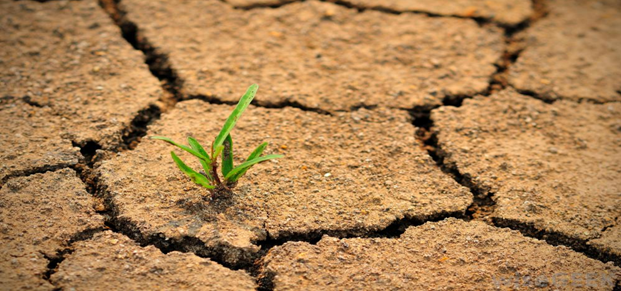Team:Glendale CC AZ/Project/Background/Overview
From 2013.igem.org
Glendale Community College Arizona
Overview
Desert areas, making up almost one-quarter of the Earth surface, are home to 500 million people. As a result of human habitation, every continent in the world except Antarctica is increasingly and adversely affected by desertification. Studies forecasting climate trends indicate that desert regions will face an even drier future – in regard to both climatic factors and drought conditions – stemming from the influence of human activities. One human-created impact on these desert environments is pollution. Many remediation challenges exist specific to the extremely dry conditions present in these arid locales. For example, what happens when a desert area is polluted with such substances as plastics, where commonly employed bioremediation agents used for environmental cleanup cannot survive desert climates’ high temperature and low humidity extremes? Our team has developed a kit containing biological components that will provide desiccation resistance to organisms used to facilitate the elimination of contaminants, like plastics, in desert-like environments. Our goal is to design an assortment of complementary parts, which will strengthen organisms and help to broaden their climatic and geographic range of effectiveness. While some parts included in our kit could, conceivably, provide resistance to other types of stresses, such as ionizing radiation, we will initially focus on desiccation. Because of its potential to expand the extent of the efficacy of these biological breakdown expedients into even climatically extreme territories, our kit could be a valuable addition to any bioremediation project.
Growing Desert

Desert regions are currently found scattered around the globe, but, with the advent of global warming, both the boundaries of these regions and the appearance of new areas that could be seen as “desert-like” are increasing at a rapid rate. Rainfall is predicted to decrease by as much as 20% by the end of the century, causing water sources to be depleted and wells to run dry, ultimately resulting in the death of plants and animals. Consequently, humans will migrate to more climatically hospitable locations, which, in short order, has the likelihood of creating the very same problems in these newly habited areas not previously impacted by desertification, thus perpetuating a vicious cycle of depletion, desiccation, and death. Irrigation used for agriculture may, in the long term, lead to soil with salinity levels too high to support plants. Higher temperatures can also produce an increasing number of wildfires, which alter desert landscapes through the elimination of slow-growing trees and shrubs, followed by an influx of highly flammable fuel in the form of fast-growing grasses. In addition, as glaciers, which provide a large portion of the water used for agricultural and domestic purposes in the deserts of the southwestern United States, South America, and Central Asia, continue to melt, the loss of these ancient sources threatens to further limit water availability in these regions. Glaciers keep melting which threatens water availability in some areas.
Previous Research
Deinococcus radiodurans
Text
PprI
For the team’s Igem project, we wanted to increase E. coli’s desiccation resistance to help it survive in a desert environment. To do this, we planned to insert different genes from the Deinococcus species into the E. coli to increase its resistance to dessication. One of the genes our Igem group wanted to investigate was PprI. PprI is the transcriptional regulator involved in the expression of many of the DNA damage response proteins in Deinococcus radiodurans. In 2012, the Osaka team transformed E. coli with PprI to determine its effects on hydrogen peroxide resistance. Because of this, a PprI part from this team was in the Igem parts database. This allowed us to order their PprI part from the Igem registry and perform our experiments with it.
LeA
During our research for desiccation-resistance factors, we came across with the 2010 Valencia iGEM project. They demonstrated that late embryogenesis abundant proteins (LEA) from soy beans provided protection against extreme temperatures, when expressed in E. coli. Since high temperatures might lead to desiccation, we decided to explore LEA proteins in more detail. Previous studies have reported that LEA protein enhances the tolerance to various environmental stresses in organisms (Liu, Zheng, Zhang, Wang, & Li, 2010). They were first discovered in cottonseed and other plants vegetative tissues that were exposed to cold temperatures, drought, and high salinity (Liu et al., 2010).
LEA proteins are part of an extensive multi-gene family and are classified based on their sequences and expression patterns (Liu et al., 2010). Since Deinococcus was our organism of interest, we looked for studies that had reported homolog LEA proteins in this bacterium.
PprA
Text
Text
RecA
Coming soon
PprM
Coming soon
References
- Liu, Y., Zheng, Y., Zhang, Y., Wang, W., & Li, R. (2010, May 1). Soybean PM2 protein (LEA3) confers the tolerance of Escherichia coli and stabilization of enzyme activity under diverse stresses. Current Microbiology, 60(5), 373-378. doi:10.1007/s00284-009-9552-2
- MAKAROVA, K. S., ARAVIND, L., WOLF, Y. I., TATUSOV, R., MINTON, K. W., KOONIN, E. V., & DALY, M. J. (2001, March). Genome of the extremely radiation-resistant bacterium Deinococcus radiodurans viewed from the perspective of comparative genomics. MICROBIOLOGY AND MOLECULAR BIOLOGY REVIEWS, 65(1), 44-79. doi:10.1128/MMBR.65.1.44–79.2001
 "
"